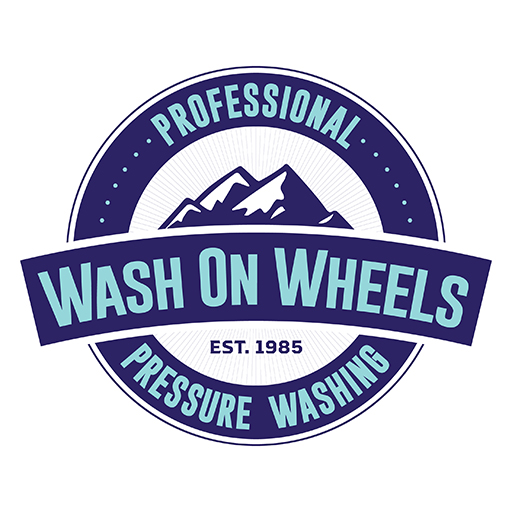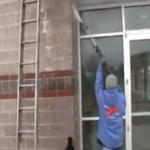Before pressure washing the white substance on your building, make sure it’s what you think it is.
Otherwise, you’ll use the wrong procedure. Sometimes, it’s only minerals from the water in the sprinkler system. This will usually come off with just water pressure, though it sometimes takes hot water.
Efflorescence is typically a white deposit of water-soluble salts left behind on the surface of brick after water evaporates. The salts usually seep from the brick itself, but sometimes can be from the mortar, the water used to make the mortar or sometimes the dirt that is used to back-fill against brick in landscaping. There is always moisture content in brick. If the brick has a small flaw, the flaw allows moisture to travel to the surface of the brick. As the moisture travels, it draws salt through the brick with it. Once the moisture reaches the surface, it evaporates, leaving behind the salt that becomes the troublesome efflorescence.
We were called out for pressure washing what we were told was efflorescence on a fairly new building in Denver. It’s common for efflorescence to show up 3-9 months after construction. The rest of the information matched the expectations for efflorescence, so we sent a pressure washing crew with the assumption the problem was efflorescence. When our crew got to the job site, our team leader looked at the areas to be pressure washed and realized right away it wasn’t efflorescence. It was obvious from the fact that he could rub the white powdery film loose from the brick with his finger.
We contacted the building manager and explained what we found. We told him we didn’t know for sure what the substance was, but a quick pressure washing rinse would get it off. Once the manager understood this, he said it must be from the new white rubber roof on the building. Our team leader confirmed the pattern of white on the brick was darker near the top of the walls and seemed to come from certain points along the roof line.
If our team leader hadn’t taken a moment to check the details of the job before beginning his work, he would have started his normal process for chemical removal and pressure washing of efflorescence and may not have realized how quick and simple a job it could be.
By taking the time to verify the details of this pressure washing job, he saved our customer several hundred dollars and still gave them the clean building they wanted.
Related pages and articles


